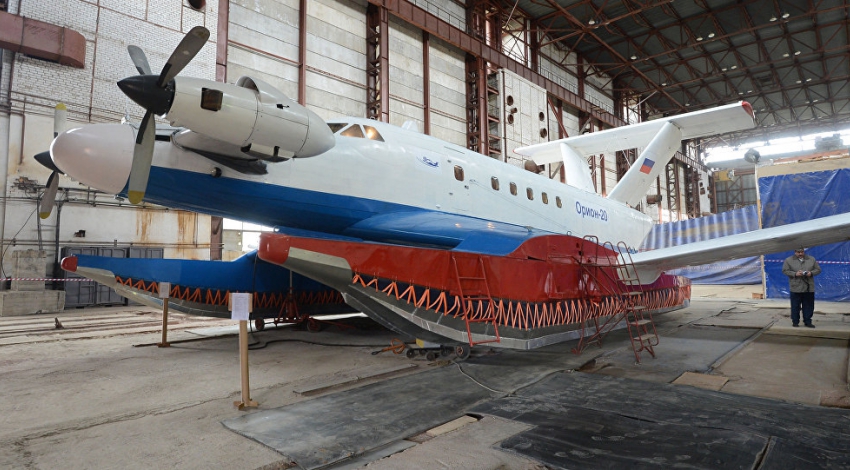The Orion-20 has maximum speed of�180 km/h and can haul one ton of�cargo, plus 12 passengers.
�In 2011 we signed a contract with�Iran�s Bonyan Danesh Shargh ??mpany for�the delivery of�a number of�Orion-12 ekranoplanes. Three such aircraft have already been supplied and we are now in�talks for�the supply of�our experimental Orion-20s,� Yuri Varakosov, Russia�s chief designer of�ekranoplans, told Sputnik.
The international sanctions which were imposed on�Iran have also been a factor in�the delayed supply of�the initial batch of�Orion-12 amphibious planes to�Iran.
With most of�the sanctions now lifted, Russia can resume delivering the planes and may also think about�producing them jointly with�Russia's Iranian partners.
�We also had to�adapt our planes to�Iran�s hot and humid climate and also to�its rocky coastal areas, which necessitated certain changes to�the planes� original construction,� he said.
He also mentioned the Iranians� desire for�the joint production of�Orion planes.
�Well, we have nothing against�this idea and are ready to�discuss it as�part of�a joint venture we are going to�establish with�our Iranian partners,� Yuri Varakosov said.
Ground effect planes, or ekranoplans, were originally developed by�the Soviet Union in�the 1960s as�high-speed military transport vehicles, and were used mostly on�the shores of�the Caspian Sea and Black Sea.
Built in�the mid-1960s, the 100-meter-long Caspian Sea Monster was the biggest ekranoplan of�all time, and weighed an impressive 544 tons.
Despite its weight, the vehicle could lift heavier loads off�the ground than�any other plane at�the time.
The Caspian Sea Monster's successors, including the Lun (Hen Harrier) and the Orlyonok (Eaglet), were much smaller and lighter and were used both for�military and civilian purposes.Built in�the mid-1960s, the 100-meter-long Caspian Sea Monster was the biggest ekranoplan of�all time, and weighed an impressive 544 tons.
Despite its weight, the vehicle could lift heavier loads off�the ground than�any other plane at�the time.
The Caspian Sea Monster's successors, including the Lun (Hen Harrier) and the Orlyonok (Eaglet), were much smaller and lighter and were used both for�military and civilian purposes.
# Tags











